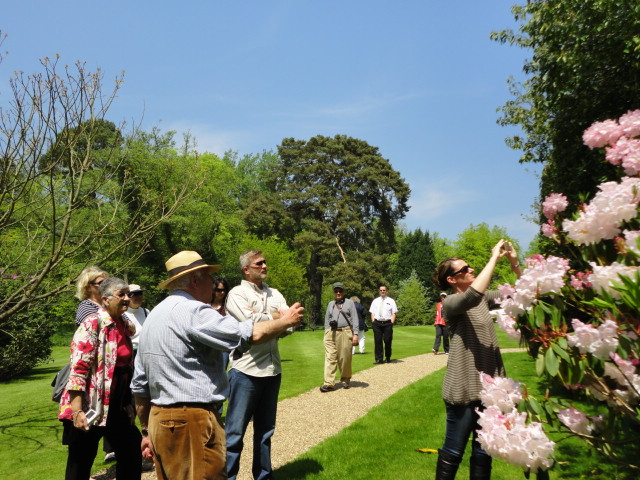Hampton Court Palace
Hampton Court Palace itself is huge, with an almost tangible feeling of history reaching out. The property was enclosed from farm land in the early 16th century. It was first acquired by Cardinal Wolsey and was his for only fifteen years before Henry VIII engineered his disgrace and took possession in 1529. William III (William of Orange – see Paleis Het Loo), and his wife and joint Sovereign Mary II, came to the throne in 1689. To celebrate the Glorious Revolution, they rapidly began rebuilding the Palace with plans by Sir Christopher Wren; magnificent plans which were actually never completed because Mary died in 1694 and William called a halt to the building. This is considered fortunate in a sense, because the original unspoiled Tudor character is now considered one of the greatest architectural assets of Britain.
Not only is this a magnificent palace in a powerful historical sense, but it also has a wonderful garden, retaining much of its historical formal design, and has been under the supervision of some of Britain’s most innovative gardeners; Henry Wise, ‘Capability’ Brown and Humphrey Repton. The famous Maze was created in 1690 for William III.
The Great Fountain Garden, between the Palace and the Long Water canal, was originally the Great Parterre, designed for William and Mary by the French designer Daniel Marot, extending to a pattes-d’oie of trees beyond. Queen Anne later had all the box removed as she objected to its smell. She replaced it with grass and the original clipped yew trees have since been allowed to grow to a substantial size. Large Victorian beds, originally for carpet bedding, now contain larger colour co-ordinated flowers. The long interesting herbaceous border against the Broad Walk wall was introduced in the 1920s.
Henry Wise was superintendant of the royal gardens at the time of the 1701 completion of the King’s Privy Garden for William as recorded in the panoramic painting by Dutch draughtsman and painter Leonard Knyff (1650-1721). This garden was researched and restored, with help from Het Loo at Apeldoorn in the Netherlands, and reopened to the public in 1995. It is separated from the Thames-side public towpath by magnificent gilded wrought iron railings (screen) by Jean Tijou.
Reputedly the oldest Grapevine in existence, was planted by ‘Capability’ Brown in 1768 when he was head gardener here. The Pond Gardens, enclosed by hedges, were originally ornamental freshwater fish ponds. They are now bedded out with a colourful display of annuals. Close to the Pond Gardens is a knot garden laid out to a design by historian Ernest Law in 1924 with plants of the 16th century.
There are beautiful walled rose gardens, a Tudor style raised walk from which to view the parkland and gardens, orangeries with splendid statuary, an impressive chestnut tree avenue planted on exactly the line Wren chose for the unbuilt part of his new palace.
The well known author and landscape gardener Humphrey Repton succeeded Brown as head gardener.
A long term sympathetic restoration plan is slowly rolling back many years of ‘parks gardening’ to reveal many original concepts in this fascinating place. Albums of drawings dating from 1780 by John Spyers, Brown’s surveyor and draughtsman, have revealed much about its original form. Drawn for Catherine the Great, these are still preserved in St Petersburg’s State Hermitage Museum in Russia.

 Passionate about beautiful gardens? Experience the finest gardens on one of our small and friendly group tours.
Passionate about beautiful gardens? Experience the finest gardens on one of our small and friendly group tours.
 Ready to book?
Ready to book? 
